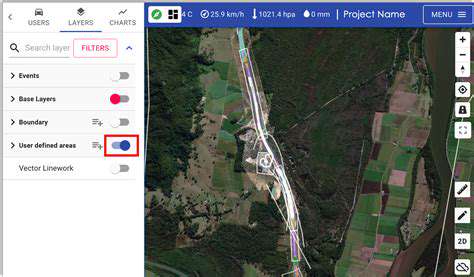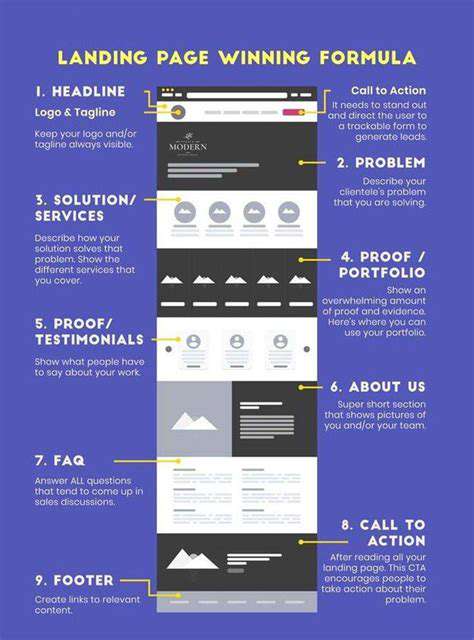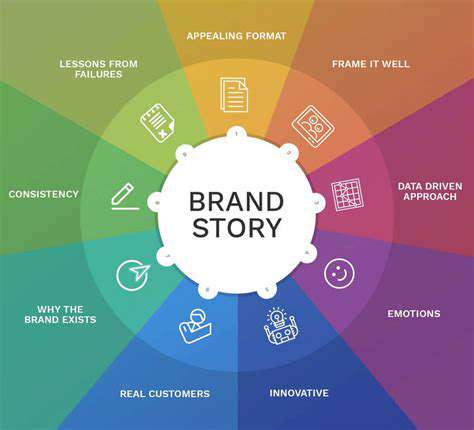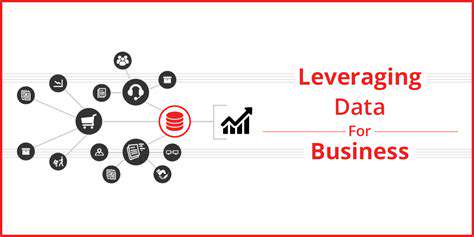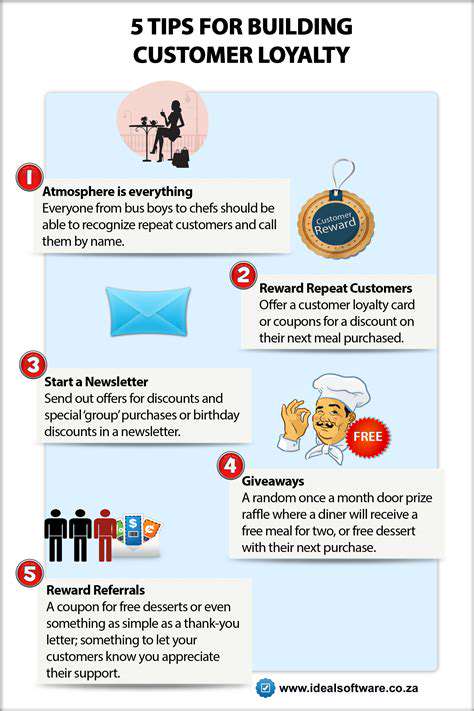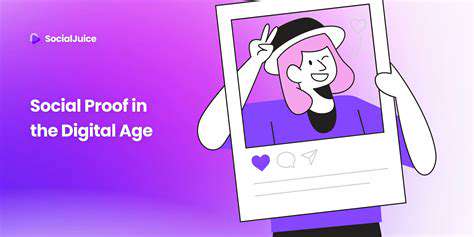Customer Segmentation for Targeted CRM Campaigns
Understanding Your Customer Base
Identifying your target audience is the cornerstone of any successful CRM strategy. It's not enough to simply have a large customer base; you need to understand who those customers are, what their needs are, and how they interact with your brand. This understanding allows you to tailor your marketing efforts, product development, and customer service to resonate with specific segments, maximizing the value you provide and fostering stronger relationships.
A deep dive into customer demographics, purchase history, and engagement patterns is crucial. Analyzing this data allows you to identify common traits, preferences, and pain points within different groups of customers. This granular view is the foundation upon which targeted marketing and personalized customer experiences are built.
Segmenting by Demographics
Demographic segmentation divides your customer base based on measurable characteristics like age, gender, location, income, education, and occupation. Understanding these factors can help you tailor your messaging and product offerings to appeal to specific demographic groups. For example, a company selling athletic wear might target younger demographics with trendy designs and fitness-focused marketing campaigns, while targeting a more mature audience with comfort and durability as key selling points.
Segmenting by Psychographics
Psychographic segmentation delves deeper by considering customers' values, interests, lifestyles, and personalities. This approach allows for a more nuanced understanding of motivations and behaviors. For instance, a company selling sustainable products might target customers who prioritize environmental consciousness and ethical practices, crafting messaging that resonates with their values.
Analyzing psychographic data can help you identify shared values and preferences, allowing you to develop targeted marketing campaigns that resonate deeply with each segment.
Segmenting by Buying Behavior
Analyzing past purchase history, frequency of purchases, and average order value provides valuable insights into customer purchasing habits. This approach helps to identify high-value customers, loyal customers, and those who might be more receptive to specific promotions or product recommendations. Understanding buying behaviors allows businesses to tailor their offerings and promotions to encourage repeat purchases and increase customer lifetime value.
Identifying patterns in how customers interact with your products or services, such as preferred payment methods or browsing behaviors, can lead to more effective marketing strategies.
Segmenting by Customer Needs and Pain Points
Understanding the specific needs and pain points of different customer segments is vital for developing targeted solutions. By identifying the challenges your customers face, you can create products and services that address those needs directly, fostering stronger customer relationships and driving loyalty. This insight allows for the development of targeted solutions that directly address specific customer issues.
For example, a company selling software might segment customers based on their unique workflow requirements, enabling them to create specialized features that directly address the specific pain points of each segment.
Utilizing CRM Data for Segmentation
CRM systems are powerful tools for collecting and analyzing customer data, enabling precise segmentation. By leveraging data from various touchpoints, such as website interactions, purchase history, and customer service interactions, you can build detailed profiles of individual customers and identify shared characteristics across different segments. This allows for dynamic segmentation, enabling you to adapt your strategies based on real-time customer behavior.
The insights gained from CRM data empower businesses to develop targeted marketing strategies, personalize customer experiences, and ultimately, drive increased customer satisfaction and profitability.
Identifying Key Customer Segments for Personalized Communication
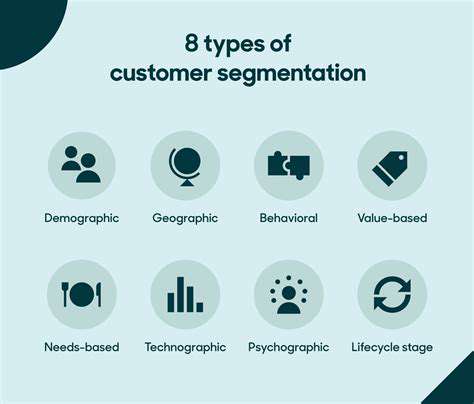
Understanding Customer Needs and Motivations
Identifying key customer segments is crucial for effective marketing and product development. A deep understanding of customer needs, motivations, and pain points is essential for creating targeted strategies. This involves researching different customer groups, analyzing their behaviors, and understanding their priorities. By understanding these aspects, businesses can tailor products and services to meet their specific requirements, leading to increased customer satisfaction and loyalty. This knowledge allows for the development of more personalized marketing campaigns that resonate with the specific needs of each segment.
Understanding their motivations helps you tailor your messaging and product offerings to resonate more deeply with each group. Examining how customers use your products or services, and why, can uncover key patterns that inform strategic decisions. A customer's motivation can be driven by factors such as convenience, cost, quality, or social status, all of which contribute to their overall purchasing behavior.
Defining Segment Characteristics and Behaviors
Once you've established a general understanding of customer needs, defining the specific characteristics and behaviors within each segment is crucial. This includes factors like age, location, income, occupation, lifestyle, and purchasing habits. It's important to look at these details beyond basic demographics. Consider the specific needs and pain points each segment faces. Understanding how these segments interact with your products or services is critical.
Analyzing purchasing patterns and frequency helps to pinpoint profitable niches. Understanding their purchasing journeys and decision-making processes can allow for the creation of more effective sales and marketing strategies. For example, identifying the specific products or services that a particular segment values most can lead to targeted promotions and product improvements that are specifically designed to satisfy their unique needs.
Segmenting customers by their behaviors, such as frequency of purchase or preferred channels, can lead to a more profitable strategy. This allows for a deeper understanding of how and why customers interact with your business.
Developing Targeted Marketing Strategies for Each Segment
Once you've identified and defined your key customer segments, you can develop targeted marketing strategies for each. This involves tailoring your messaging, product offerings, and promotional activities to resonate with the specific needs and preferences of each group. For example, a segment focused on cost-conscious customers might respond well to promotions emphasizing value and affordability, while a segment seeking premium quality might be more receptive to messaging highlighting exclusivity and luxury. This tailored approach ensures that your marketing efforts are more efficient and effective, leading to increased conversions and profitability.
By understanding the motivations and behaviors of each segment, you can craft marketing messages that resonate on a deeper level. This targeted approach allows you to allocate resources more effectively and focus your efforts on the segments most likely to yield a return on investment. Effective marketing tailored to each segment can significantly increase brand awareness and customer loyalty within each group.
Ultimately, understanding your customer segments allows you to create a more robust and successful business strategy. This leads to improved customer relationships, increased revenue, and greater brand loyalty. By employing appropriate segmentation strategies, organizations can achieve significant competitive advantages and profitability.
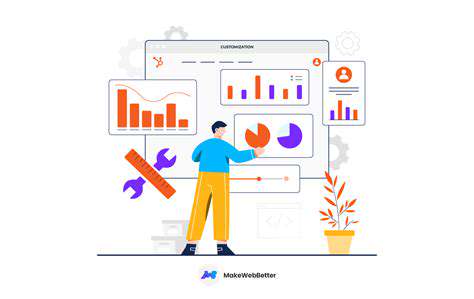
Optimizing CRM Campaigns for Measurable Results
Understanding Customer Segmentation
Effective CRM campaigns rely heavily on understanding your customer base. Customer segmentation is the process of dividing your customer list into distinct groups based on shared characteristics, such as demographics, purchasing behavior, or engagement levels. This allows you to tailor your marketing messages and offerings to resonate with specific needs and preferences, improving the likelihood of conversion and driving higher ROI. By identifying key segments, you can personalize your approach and create more impactful interactions.
This granular view of your customer base allows you to go beyond broad marketing messages and speak directly to the individual needs within each segment. This personalization is crucial in today's market where customers expect tailored experiences.
Defining Key Performance Indicators (KPIs)
Before launching any CRM campaign, it's essential to define clear and measurable KPIs. These metrics will serve as benchmarks to track the success of your efforts. Examples include conversion rates, customer lifetime value (CLTV), customer acquisition cost (CAC), and engagement metrics like click-through rates and open rates. Setting quantifiable goals and tracking these KPIs throughout the campaign provides valuable insights into campaign performance and allows for necessary adjustments.
Personalizing Communication Strategies
One of the most impactful ways to optimize CRM campaigns is by personalizing communication strategies. Tailoring messages to specific customer segments based on their preferences and behaviors will significantly improve engagement. This personalization could involve using different language, product recommendations, or even adjusting the frequency of communication. A personalized approach fosters a stronger connection with customers and builds trust, ultimately leading to increased customer loyalty.
Utilizing Data-Driven Insights for Campaign Optimization
CRM campaigns thrive on data. Regularly analyzing the data collected from your campaigns is crucial for identifying what works and what doesn't. Tracking key metrics like open rates, click-through rates, and conversion rates allows you to adjust your strategy in real-time. Identifying patterns and trends will help you refine your approach and optimize your campaigns for maximum impact.
Implementing Automated Workflows for Efficiency
Automating workflows within your CRM system can significantly boost efficiency and save valuable time. Automated tasks such as sending personalized welcome emails, follow-up messages, or targeted promotions can free up your team to focus on higher-level tasks. Automation ensures consistent communication and reduces the risk of human error, leading to a more streamlined and effective campaign.
A/B Testing for Campaign Refinement
A/B testing is a powerful tool for optimizing CRM campaigns. By testing different variations of your messages, emails, or landing pages, you can identify which versions perform best with each segment. This data-driven approach allows you to refine your campaigns and maximize their impact by focusing on the most effective strategies. A/B testing allows you to see what resonates best with your customer base in a controlled environment.
Continuous Monitoring and Improvement
Optimizing CRM campaigns is an ongoing process, not a one-time event. Continuously monitoring campaign performance, analyzing data, and making adjustments based on insights are crucial to achieving sustained success. Staying updated on industry trends and best practices will help you identify new opportunities for improvement and keep your campaigns relevant and engaging.
Read more about Customer Segmentation for Targeted CRM Campaigns
Hot Recommendations
- Personalizing Email Content with User Behavior
- Geofencing for Event Attendance Tracking
- Reputation Management on Social Media
- UGC Beyond Photos: Videos, Testimonials, and More
- The Future of Data Privacy Regulations
- Accelerated Mobile Pages (AMP) Benefits and Implementation
- The Future of CRM: AI and Voice Integration
- Google Ads Smart Bidding Strategies: Maximize Value
- Common A/B Testing Pitfalls to Avoid
- Local SEO Strategies for Small Businesses

